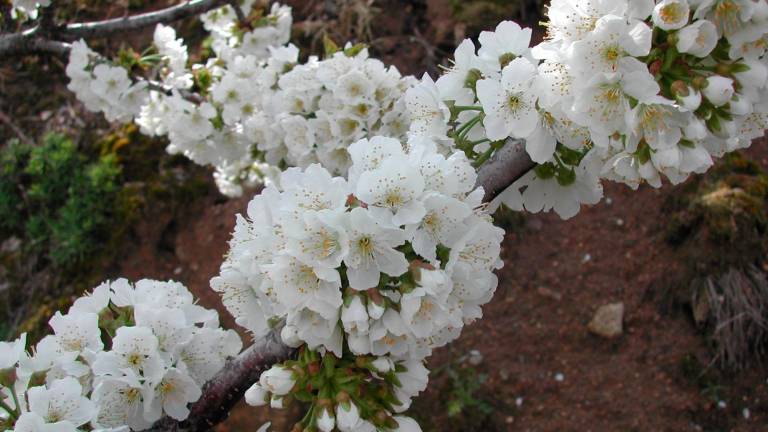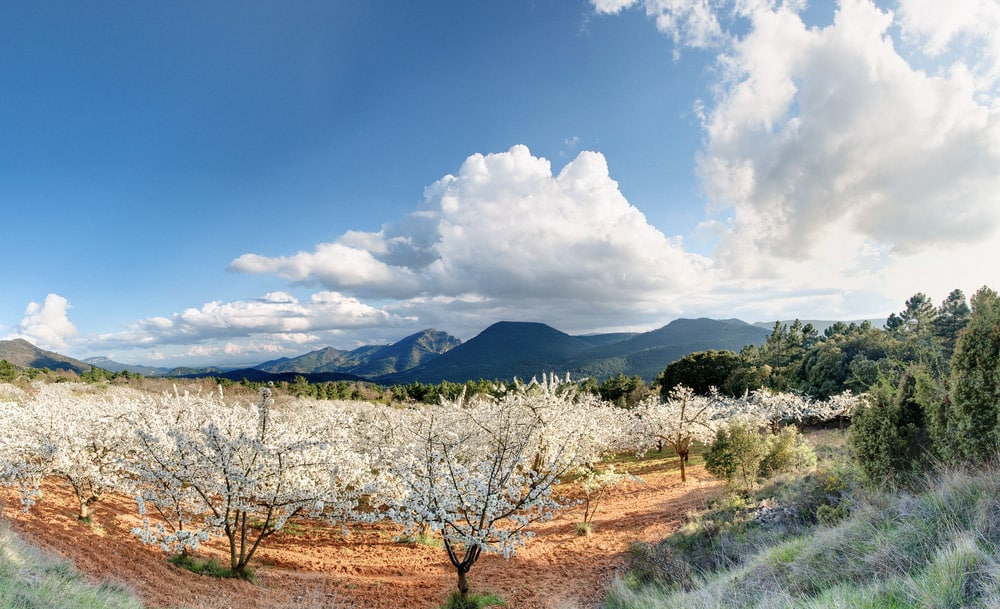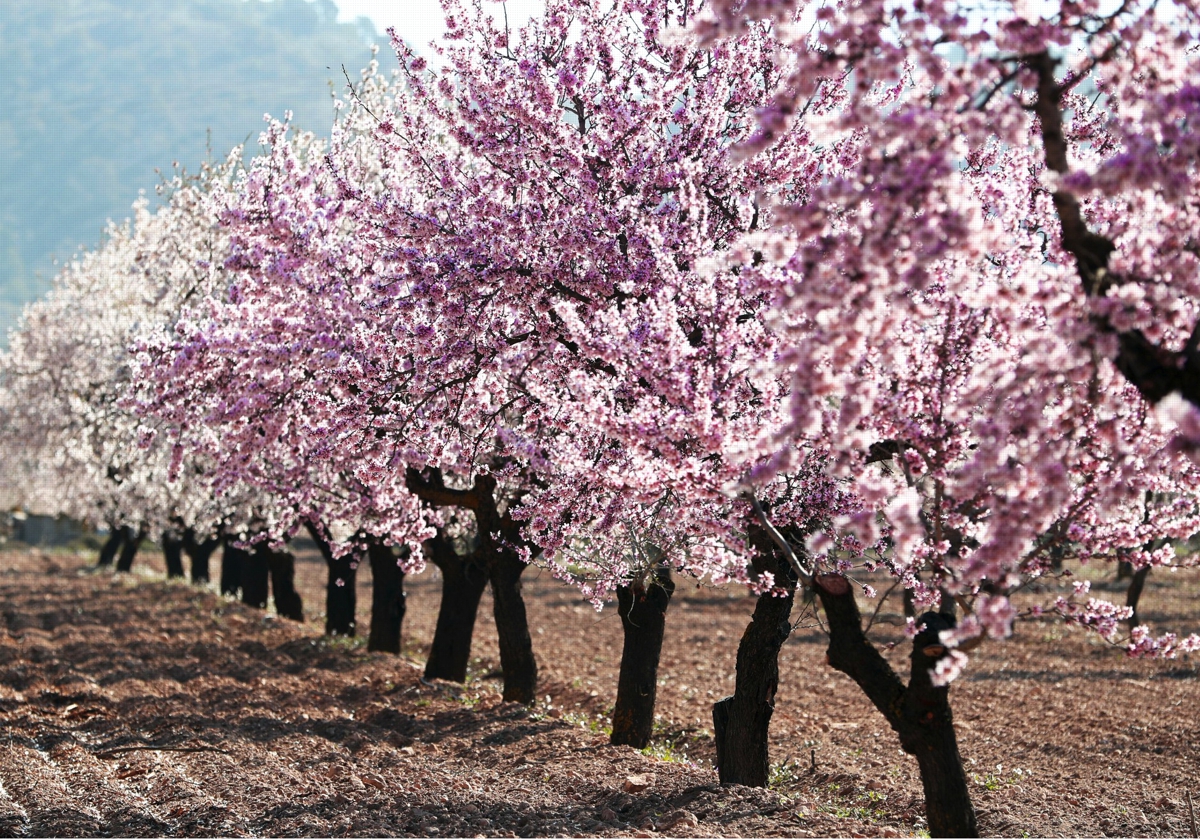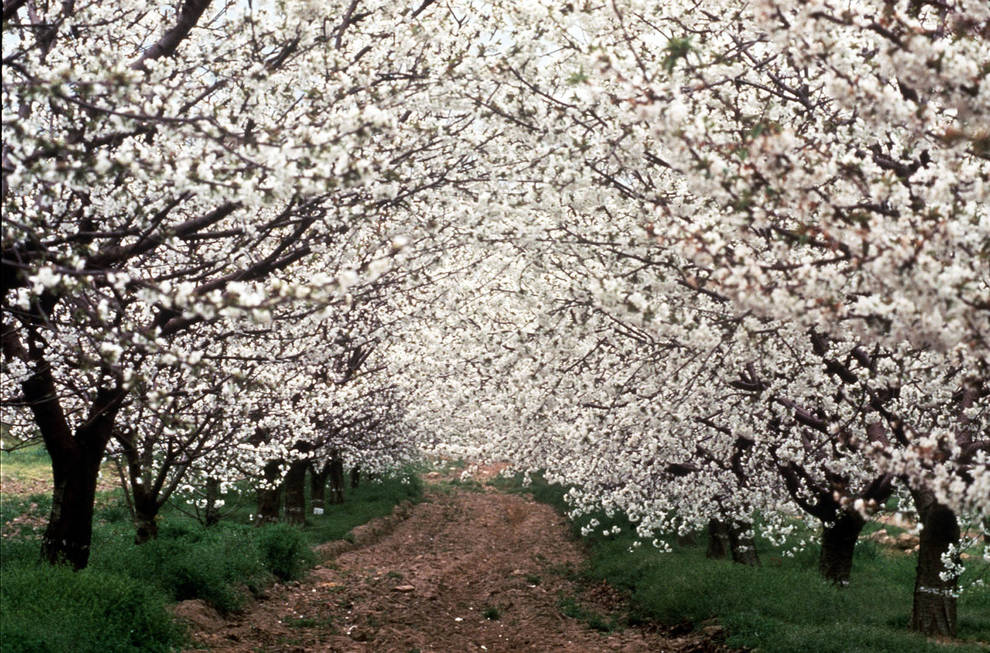
The Jerte Valley, in northern Extremadura, is famous for the cherry blossom in Spring; an amazing spectacle when over two million trees bathe the valley sides in white.
Following a century-long family custom, the cherries are grown in the traditional way on terraces carved out of the high mountainsides of the Jerte Valley, among crystal-clear springs and pure air. Only such a unique spot with a privileged microclimate could grow the best cherries in Spain.
The cherry blossom is one of the major tourist attractions of the Jerte Valley. The region has more than two million cherry trees. During the Spring, when they bloom, they create a real natural show. The slopes across the region dress in white.


In the Jerte Valley, the cherry blossom announces the arrival of the first cherries of the season. This is dependent on the weather conditions. The cherry blossom usually lasts between twelve and fourteen days, and normally occurs during the last weeks of March.
On these dates, the region celebrates the Cherry Blossom Festival, declared an event of National Tourism Interest. Alternately, the villages of the Valle del Jerte welcome the opening and closing events of a festival that has been held there for more than four decades. For local farmers, it symbolises the arrival of a new crop.

In the Valle del Jerte, cherry trees are grown on the slopes of the mountain, on terraces. To flower, they need to accumulate between 800 and 1,000 cold hours during the winter, supporting temperatures between zero and six degrees centigrade. They must wait for the frost to end in order to display their flowers.
The cherry blossom does not bloom along the Jerte Valley in a homogeneous manner. This is due to the arrangement of the trees on the mountainside and the different varieties of trees. The Jerte Picota - the most precious, and the Burlat cherries are the ones that need to accumulate more hours of cold temperatures. Likewise, those trees at the bottom of the valley will bloom before the trees that are higher up.
If you would like to plan a walk through the Jerte Valley use this walking guide to get the best views.

To get daily updates about the state of flowering of the Jerte Valley go to this official blog